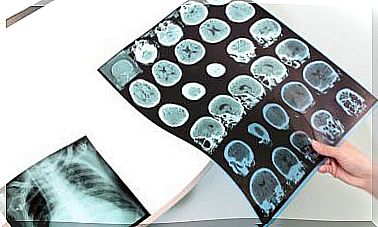Pituitary Tumors: Causes And Symptoms
Pituitary tumors are abnormal growths of the cell populations of the pituitary gland. This gland is known as the pituitary gland and is attached to the hypothalamus by a string of nerves and blood vessels.
Most pituitary tumors are benign and slow growing. They are characterized because they remain in the gland or in the adjacent tissues. Because of this, they do not spread to other parts of the body.
Some of the pituitary tumors can cause the pituitary gland to produce excess hormones. However, others cause the gland to produce very little hormones.
Types of pituitary tumors
The hormones produced by the pituitary gland regulate very important functions for the body. These functions are growth, metabolism, stress response, and the functions of the sexual organs through the thyroid, adrenal glands, ovaries, and testes.
The causes of pituitary tumors are unknown, although some have hereditary components. This is how they are classified according to their functionality:
- Functional tumors : are those that produce too many hormones. In this way, it can cause problems in the body. Symptoms vary depending on the hormone affected.
- Non-functional tumors : are those that do not produce hormones. Its symptoms are directly related to its growth.
What diseases cause these tumors?
Some of the diseases related to abnormal hormone levels are:
- Cushing syndrome : in these patients there is an accumulation of fat on the face, back and chest. However, the legs and arms become slimmer.
- Acromegaly: is a disease in which the hands, feet, and face are larger than normal.
- Sex hormones : The hormones of the pituitary gland affect estrogens and testosterone. This can result in a woman producing milk even though she is not breastfeeding or losing her sex drive.
Pituitary gland tumors do not have a clear cause. They are often not diagnosed because their symptoms are similar to many other more common diseases.
Symptoms of functional pituitary tumors

For functional tumors, symptoms depend on the specific hormone that is being overproduced. Some of the hormones that can be produced in excess are:
Prolactin
An excess of this hormone can cause symptoms such as alterations in menstrual cycles, milk flow in the breasts without breastfeeding, male impotence, headache and loss of vision.
Corticotropin hormone (ACTH)
When there is too much corticotropin hormone, symptoms such as weight gain, a fat lump on the neck, purple stretch marks on the skin, bone fragility, mood swings and irregular menstruation, among others, can appear.
Growth hormone
Elevated levels of growth hormone can cause symptoms such as body overgrowth or numbness in the hands and fingers. Also, joint pain and headache may appear.
Thyroid stimulating hormone (TSH )
If there is excess TSH, it will lead to symptoms such as an irregular heartbeat , tremors, weight loss, trouble sleeping, and sweating.
Symptoms of non-functional tumors

The most common symptoms of non-functional tumors are:
- Loss of body hair.
- Decreased sexual desire.
- Headache and loss of vision.
- Less frequent or absent menstrual periods.
- Slower growth and sexual development in children.
- In men there may be loss of facial hair, impotence, and growth of breast tissue.
Is there a treatment for pituitary tumors?
There are several treatment options for pituitary tumors that include removing the tumor, controlling its growth, and treating hormone levels with drug treatments.
Generally, pituitary tumors can be surgically removed through the nose. But if it cannot be done that way, it is done through the skull.
The size of the tumor can be reduced with drug treatment or using radiation therapy. Radiation therapy treatment is used in patients who cannot have surgery.









